- | 8:53 am
Posters were never going to save the planet
A new exhibition showcases the utility—or futility—of climate change protest art.
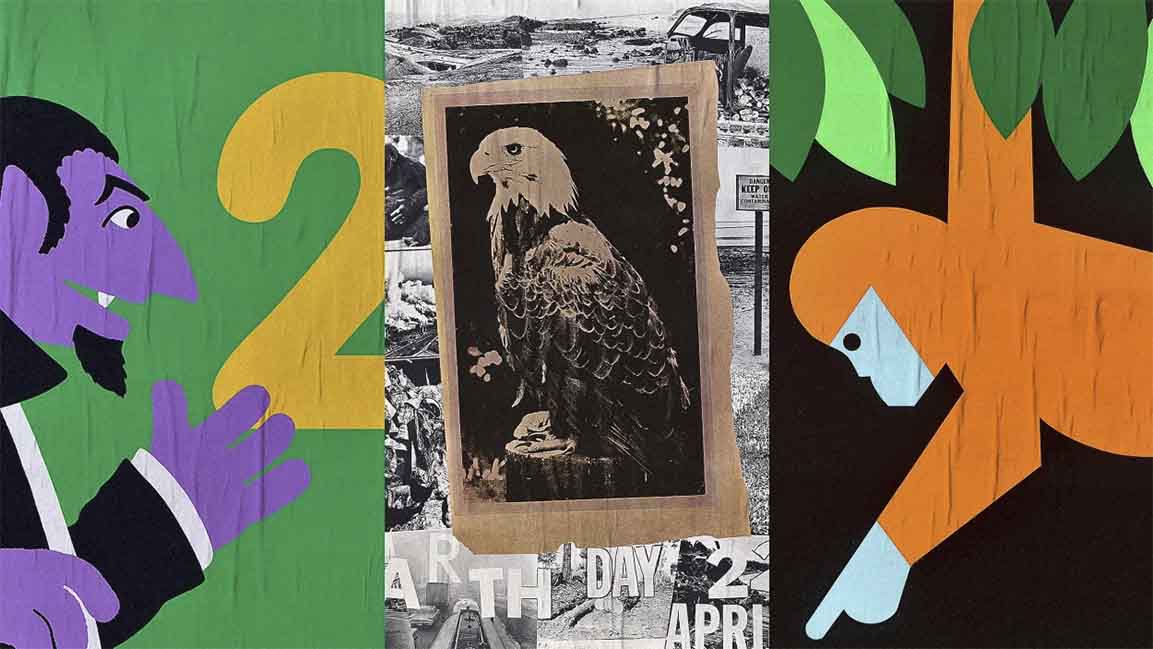
Can a poster save the burning planet? Amid the polemics, politics, and the deluge of climate change data, can a remarkable piece of visual art break through the noise and inspire action?
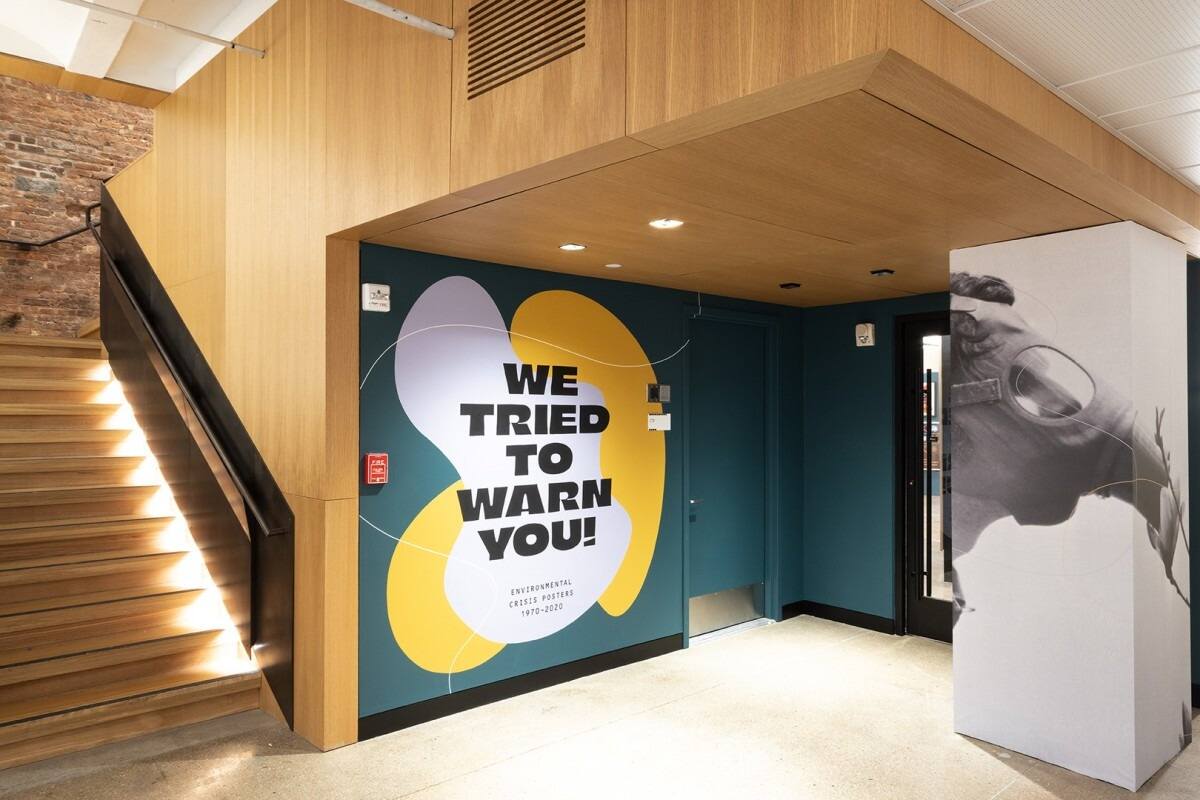
Stephanie Powell/courtesy Poster House
An illuminating exhibition at New York City’s Poster House offers a nuanced, if inconclusive, exploration about the utility (or futility) of printed propaganda in tackling the worsening environmental crisis. “Every poster in this exhibition is a failure—not in the sense that they failed in their graphic intent of communicating a message, but rather that they failed to successfully modify behavior,” writes curator Tim Medland to introduce We Tried to Warn You! Environmental Crisis Posters, 1970–2020 (on view until Feb. 25, 2024). “Nevertheless, these impactful images have shaped the bounds of public debate on environmental issues, drawing attention to distinct and particular concerns.”

[Photo: NASA]
A GRAPHIC HISTORY OF ACTIVISM
Curiously, the most influential “climate poster” in history isn’t a poster at all, but a photograph. Taken aboard Apollo 8 by NASA astronaut Bill Anders in 1968, the first color image of Earth showed the fragility and a beautiful blue planet in deep space. “Earthrise,” as the photo is known, sparked environmental movements and became a recurring motif in environmental posters, including two in the exhibition: Milton Glaser’s “Give Earth A Chance” (1970) Environmental Action Coalition and Gunter Rambow’s “All the Earth Speaks Up” (1983) created for Germany’s Green Party. (NASA has since released several versions of “Earthrise” over the years.)

[Image: courtesy Poster House]
Before we glimpsed a snapshot of our profound interconnectedness, conservation efforts were localized; tactical rather than existential. Prior to 1968, posters about the natural world took the form of travel vignettes, such as M. Pallandre’s romanticized 1890s rendering of the thermal baths of the Pyrenees, or charming silk screened preserve-our-forest appeals created during the US Works Progress Administration in the 1930s. And in the 1940s and 1950s, the U.S. Forest Service disseminated many posters featuring Smokey Bear, America’s most enduring wildfire prevention poster child, er bear.

[Image: courtesy Poster House]
We Tried to Warn You!, in essence, is an illustrated timeline about the history of environmental activism over the last 50 years. Starting with a collage Robert Rauschenberg created for the first Earth Day celebration in 1970, the survey of 33 posters presents a sampler of symbols, hot button imagery, and graphic tropes—from acid rain, gas masks, and melting sea glaciers to cute polar bears—deployed by artists and designers over the years.
The show’s most arresting poster depicts a Native American Indian shedding a tear, accompanied by the tagline, “People Start Pollution. People Can Stop It.” The poster is actually a still image capture from a problematic 1971 television commercial produced by a coalition funded by big American packaging and beverage corporations. It was also revealed that the Native American character was played by an Italian-American actor Espera Oscar de Corti, better known by his stage name Iron Eyes Cody. Earlier this year, the rights to “Crying Indian,” as the anti-litter PSA that aired for over a decade came to be known as, was handed over to the National Congress of American Indians.
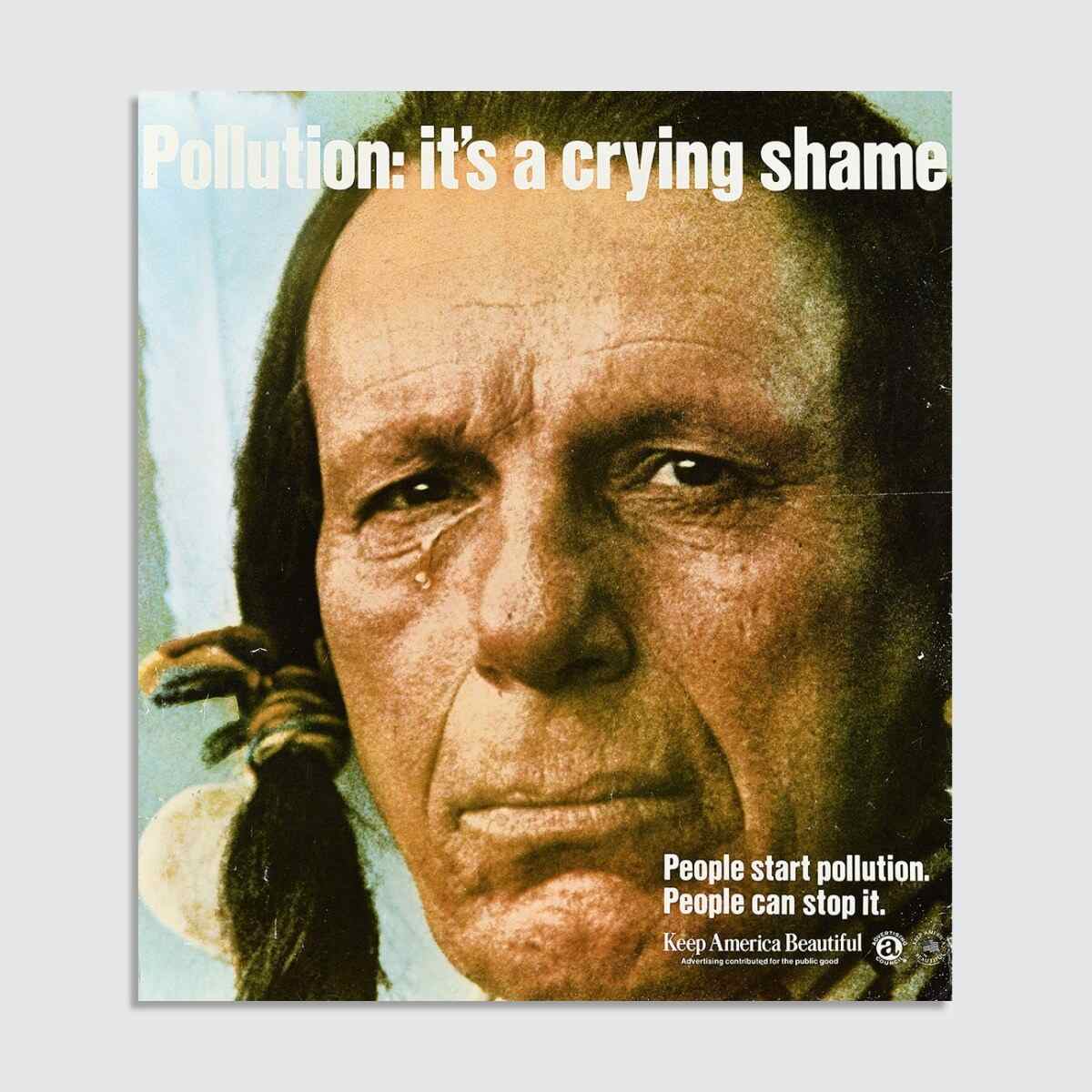
[Image: courtesy Poster House]
Apart from the maelstrom of misappropriations, “Crying Indian” is a landmark of high gloss corporate-sponsored spin—in the same vein as British Petroleum’s slick carbon footprint” PR campaign has been exposed and Apple’s recent “Mother Nature” sustainability production is being called out as a “masterclass in greenwashing.”
“Crying Indian” marked the moment when big polluting companies and their coterie of spin doctors, advertising agencies, and yes, graphic designers, too, framed the environmental crisis as a matter of individual action instead of owning up to their share of the problem. Evidence of this tactic lurks in consumer-oriented campaigns calling for the ban of plastic straws or shopping bags today. Environmental posters, as with any form of propaganda, can be deployed as weapons for mass manipulation.
POSTERS IN THE AGE OF SOCIAL MEDIA
Walking around a room of printed ephemera, one questions if the posters—as clever and beautiful as they are—have a fighting chance of reaching today’s highly distracted audience that’s glued to digital devices.

[Image: courtesy Poster House]
And even if the messages don’t result in immediate action, collectible posters by well-known artists can help organizations raise funds. Rauschenberg, for instance, was known for donating his talent and influence to various environmentalist causes, as shown in posters he created for the American Environment Foundation and the 1992 United Nations Earth Summit.
THE ARTIST’S RAGING RESPONSE
The dispiriting takeaway of We Tried to Warn You! is that the visually compelling communications around Earth’s demise have largely fallen on deaf ears. The hopeful angle is that designers and artists are still campaigning with more fervor, savvy, and imagination.

[Image: courtesy Poster House]
Winston Tseng, a New York-based graphic artist known for eye-catching satirical street posters, is among them. The creator of “Countdown to Apocalypse” and “We’re in This Together” posters included in the exhibition, says that his self-funded guerrilla campaigns are means of “processing, digesting, and then ultimately making fun of the world we’re in.”
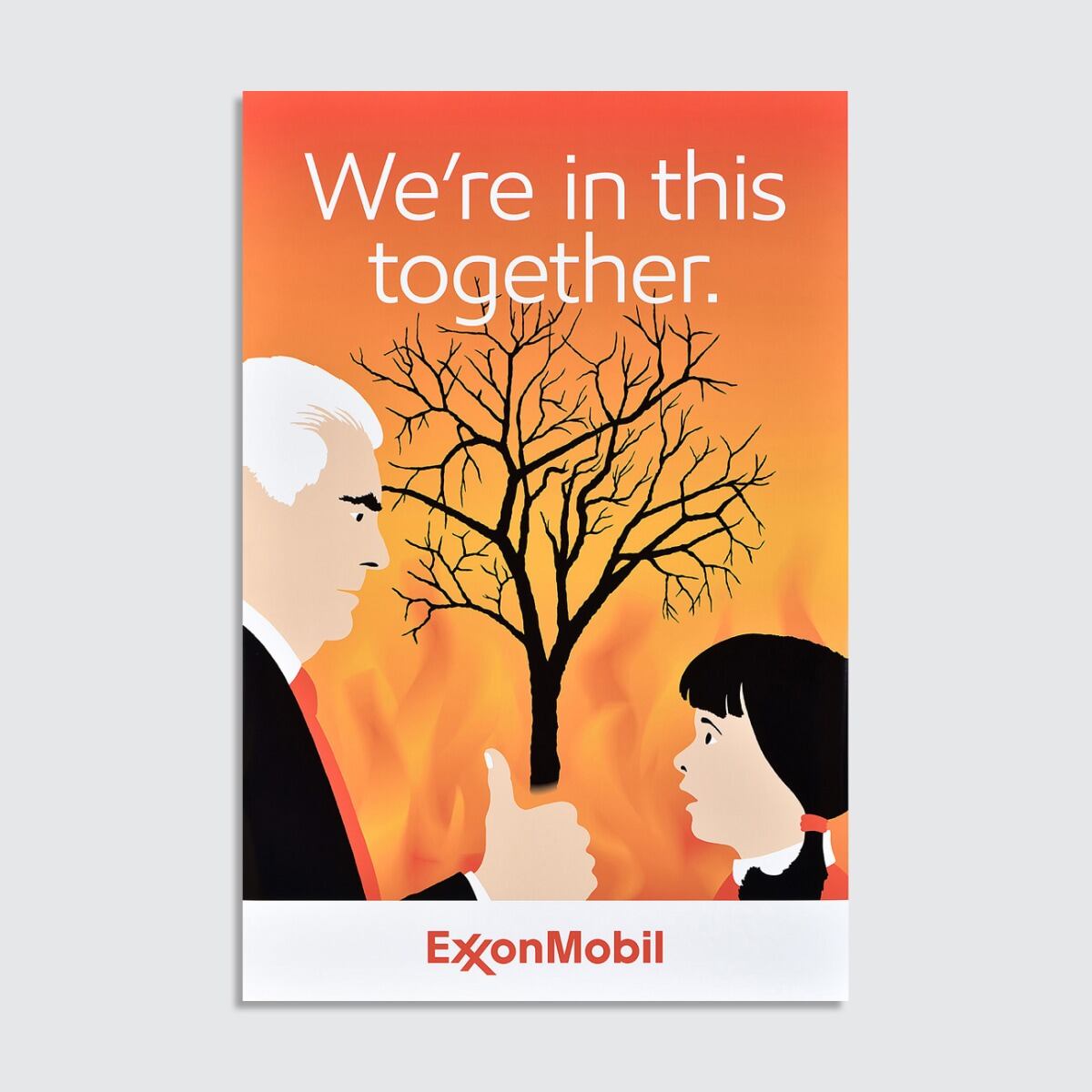
[Image: courtesy Poster House]
“I hope people that see them today feel some mix of surprise, amusement, and reflection,” Tseng says in an email. “Years from now, the goal is for the posters to give viewers a better sense of our times and what it was like.”
Amos Kennedy Jr, whose 2018 New York Climate March poster Rise for Climate, Jobs and Justice is spotlighted in the exhibition, feels impatient about the incremental progress we’ve gained after half a century of activism. As the effects of climate change become undeniable amid the succession of deadly heat waves, wildfires, and flooding in recent years, the renowned 75-year old activist letterpress printer says that a more decisive course of action is needed to save the planet.
“Everything occurs through evolution, but unfortunately, this is an issue that has to be really addressed to true revolution,” says Kennedy, who signs his emails with the salutation “agitate, agitate, agitate.”
“I went to a historically Black college with under 3,000 students and they had a formal program about Earth Day in 1970 where they addressed all the issues that are still being addressed [today]. These are not new issues.” Kennedy adds, “I will tell you, for example, that in the 1970s, an artist named Esther Phillips came up with a song about the throwaway society. We have been aware of this—or at least some of us and realized the ridiculousness of it.”
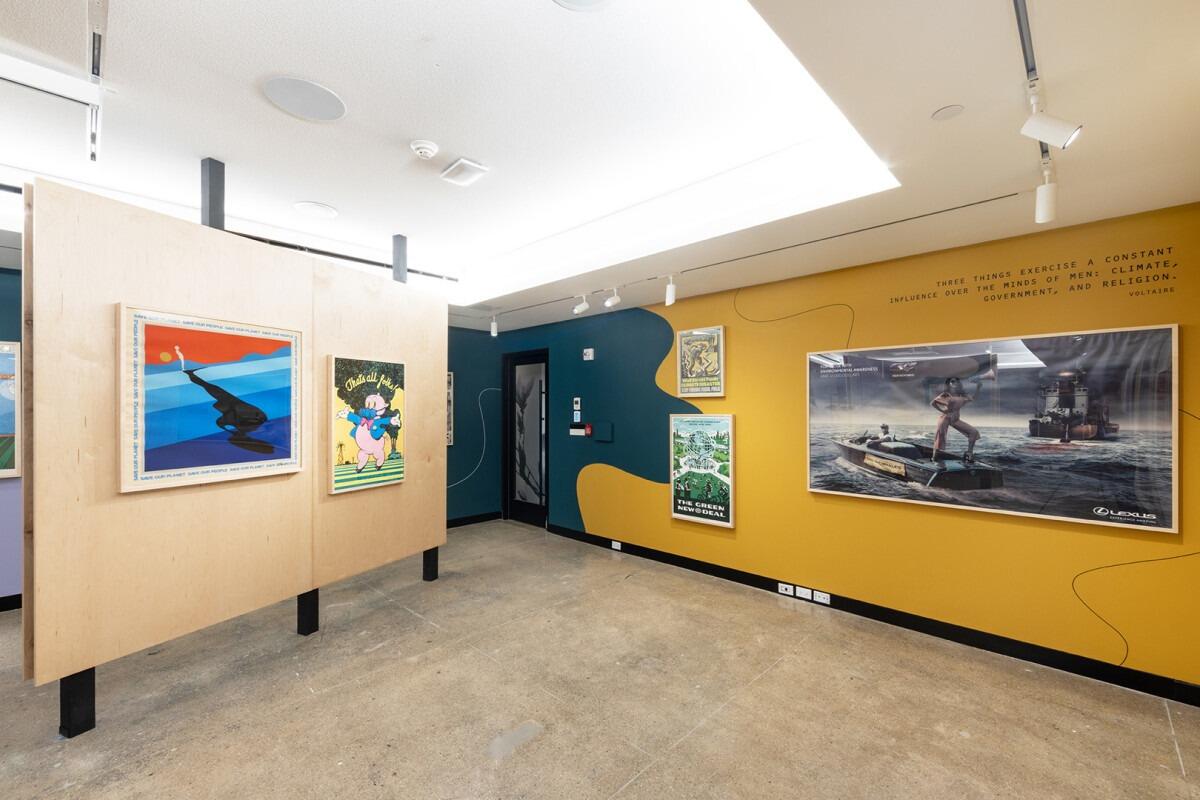
[Photo: Stephanie Powell/courtesy Poster House]
Asked what poster he might design to communicate urgency, Kennedy says “I would conjure a poster that asks people: Would you rather be dead on a planet with lots of technology and junk, or live on a planet with very little?”
In the end, advocacy posters alone cannot save us—not one intervention can. As this global crisis and this exhibition teaches us, reconciling the aims of the maker, the sponsor, and the audience is a messy enterprise. But from a purely graphic design perspective, quality matters more than ever—both in concept and execution. After all, the greatest source of climate change is complacency.





































